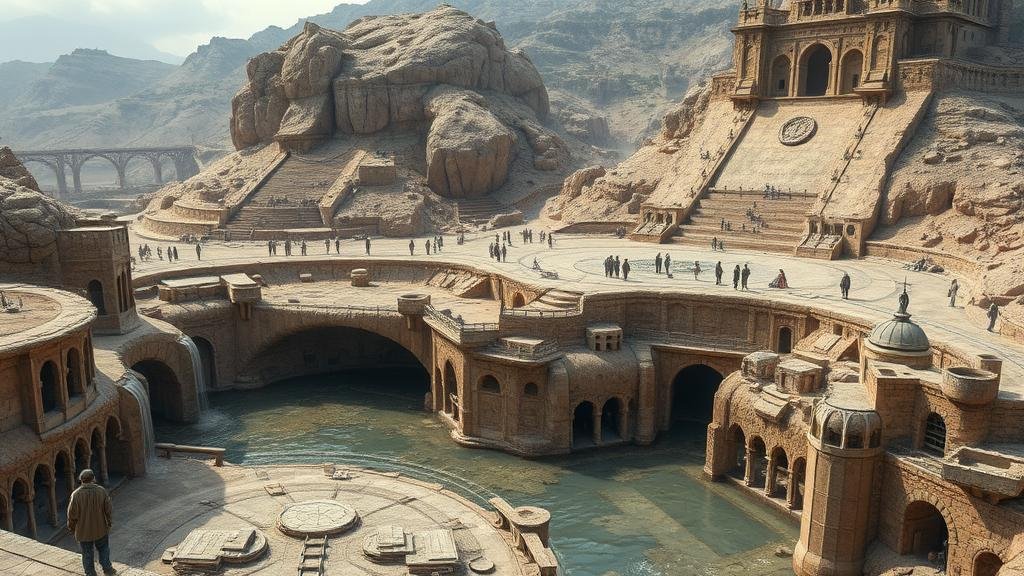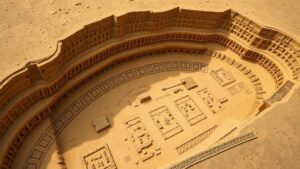Mapping the subterranean rivers said to conceal treasures beneath ancient cities.
Mapping the Subterranean Rivers Concealing Treasures Beneath Ancient Cities
The world is filled with ancient cities that whisper stories of their glorious pasts through their architecture and artifacts. But, beneath the surface, another layer of history arguably holds even more secrets: subterranean rivers. These hidden waterways not only shaped the landscapes of the cities that sit atop them, but they also serve as potential harbors for treasures long buried. This article explores the myth and reality of mapping these rivers, focusing on significant examples around the globe.
The Intriguing Concept of Subterranean Rivers
Subterranean rivers are underground waterways prevalent in certain geologies where limestone, for instance, has eroded over time, creating vast networks of caves and channels. This phenomenon allows rivers to flow beneath cities, often going undetected by the urban populace. Not only do these rivers have ecological significance, but they also carry tantalizing possibilities of archaeological finds.
Historical Context: Cities Built on Water
Many ancient cities were constructed near bodies of water for economic and safety reasons. But, the existence of underground rivers has often been overlooked in historical narratives. For example:
- Rome, Italy: Beneath the bustling streets of Rome lay the Aqua Appia, one of the earliest aqueducts, which once supplied the city with water and has numerous subterranean channels.
- Istanbul, Turkey: The Basilica Cistern, built in the 6th century, was designed to store water for the Byzantine Empire and showcases intricate columns submerged in water, hinting at the citys connection to underground waterways.
- Mexico City, Mexico: Built atop the ruins of Tenochtitlán, ancient Aztec canals still run below the modern city, giving rise to the idea that treasures from this lost civilization might still be hidden beneath the streets.
Treasure Hunting and Archaeological Significance
Several archaeological expeditions have turned to subterranean rivers, hoping to uncover treasures hidden for centuries. Some notable examples include:
- The Tiber River: In Rome, divers have investigated sections of the river that run below the city, uncovering artifacts ranging from ancient coins to pottery.
- Buried Roman Treasures in London: The River Thames has seen various discoveries, including public baths and remnants of Roman life, all linked to its subterranean flow.
- The Hidden Troves of Petra: In Jordan, the ancient city of Petra is thought to have been built around systems of subterranean water, leading archaeologists to believe that treasures from the Nabateans could still be discovered.
Modern Mapping Techniques
With advancements in technology, mapping these ancient subterranean rivers has become more achievable. Techniques such as ground-penetrating radar, LiDAR (Light Detection and Ranging), and drone surveys help researchers create detailed maps of underground environments. For example:
- Ground-Penetrating Radar: This technique allows archaeologists to visualize underground structures without excavation, revealing ancient rivers and potential treasure locations.
- LiDAR: Used in dense forested areas, LiDAR can penetrate tree canopies and map out ancient structures and waterways that were previously obscured.
- 3D Modeling: Modern software creates simulations of subterranean environments, providing insights on flow patterns and potential treasure locations.
Challenges and Ethical Considerations
While the allure of treasure hunting is enticing, it comes with challenges and ethical concerns. Unauthorized excavations can lead to the loss of historical context, and the destruction of heritage sites can be irreversible. It is vital that any exploration is conducted responsibly, with permissions secured and guided by professional archaeologists.
Conclusion: The Future of Subterranean Exploration
As technologies advance, the potential to unearth treasures hidden beneath ancient cities is more tangible than ever before. Mapping subterranean rivers not only promises to uncover artifacts of historical value but also deepens our understanding of the civilizations that thrived above. For adventurous treasure seekers and seasoned archaeologists alike, the quest beckons: beneath the city streets lies a forgotten world waiting to be rediscovered.
As we harness these modern techniques, the call to investigate the subterranean rivers promises not just treasure, but a unique glimpse into our shared heritage and humanity’s enduring legacy.



